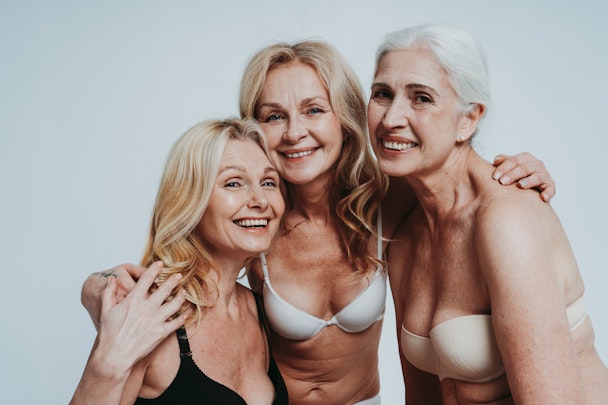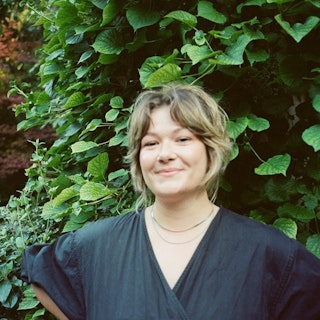‘We actually have fucking money to spend!’ Why do advertisers neglect menopausal women?
After a study by the IPA revealed that only 7% of women think brands and retailers are doing ‘very well’ at catering to the menopause, experts tell The Drum they’re missing out on a huge commercial opportunity.

Research estimates there will be 1 billion menopausal women by 2025 / Adobe Stock
Advertising has a well-documented age problem. Only 4% of people in ads are over the age of 60, despite that demographic controlling 25% of consumer spending. Within that demographic are millions of women going through the menopause – a life experience that can last up to 10 years.
Research estimates there will be a billion menopausal women by 2025, but according to a recent report by the Institute of Practitioners of Advertising (IPA) – The Menopause: The Change We Need to See, which features new and unseen data from GenM, the menopause partner for 90 brands including Sainsbury’s, Boots and QVC – just 7% of women aged 49-64 feel that brands and retailers are doing an adequate job actually catering to them at the stage of life when menopause is most common.
Advertisement
Less than a fifth (19%) of women aged 35-60 have noticed marketing or advertising specifically for menopausal products – while this is low, this figure has improved 10 percentage points since 2000.
More widely, around two-fifths of women feel that the advertising targeted at their stage of life is unreflective of their life or that of their friends (46%), uninspiring (45%), outdated (43%) and not relatable (41%).
In terms of product areas that menopausal women feel brands and retailers could do better in delivering solutions, nutrition/supplements (63%) and feminine care (58%) rank highest.
Advertisement
Heather Jackson, co-founder of GenM, says women urgently need brands and retailers to step up to the plate when it comes to considering and accommodating menopausal people in their activities. “Brands have not understood the opportunity at hand here,” she says.
“Menopausal women make up 20% of the population. GenM’s Invisibility Report shows that 87% of them feel overlooked and ignored by brands. With 48 symptoms of menopause, there are 48 opportunities for brands to serve this audience.
“This is a commercial opportunity that marketers and brands can’t afford to ignore.”
Suggested newsletters for you
In the last few years, the conversation around menopause in adland has somewhat improved. A number of agencies have implemented menopause policies into their employee benefits package and employers are increasingly aware of the needs of menopausal people in the workplace.
But Melissa Robertson, chief executive officer of Dark Horses, which launched an open-source menopause policy back in 2021, says there’s an element of frequency bias – and menopause is still an under-discussed issue in the workplace.
“The oxygen predominantly exists in an echo chamber of women of a certain age and until we get more allies outside of this universe who understand and champion the value that women in the 40s and 50s bring, it’s going to continue to exist in a bubble that doesn’t sufficiently break through into mainstream consciousness and consideration,” she says.
In Robertson’s view, we are nowhere near creating a genuine culture shift that makes women comfortable telling their bosses that they are struggling during menopause. “I suspect the biggest issue is that only 6% of the advertising industry is over 50 and the vast majority of those are going to men, so perhaps there just aren’t enough of us to champion our own cause. The answer is simple: we just need more allies.”
A knock-on effect of the advertising industry being inhospitable to women going through menopause is that they are unlikely to stick around to make the ads that are supposed to represent them.
As Katy Cottam, founder and CEO of women’s hygiene brand Luna Daily, explains: “We need to ensure midlife women have a seat at the table to ensure this perspective is being baked into strategy and creative from day one. I’d also say brands could do more work to be gently inclusive without feeling like they need to silo women of different ages and stages.”
As a result of the lack of representation behind the camera, representation for menopause in ads remains poor, says Robertson: “There are very, very few ads with women in their 50s and 60s. It’s mostly women in their 20s and 30s, then a few octagenarians to ‘do the gray thing’ because all women over 50 are categorized together in a target audience bracket. Even though we actually have some fucking money to spend, it seems that the ad industry is genuinely reluctant to show us.
“But I look around at all the women in their 50s that I know and they are interesting, opinionated and gorgeous, leading busy and exciting lives. Why wouldn’t you want to represent them? It blows my mind.”

